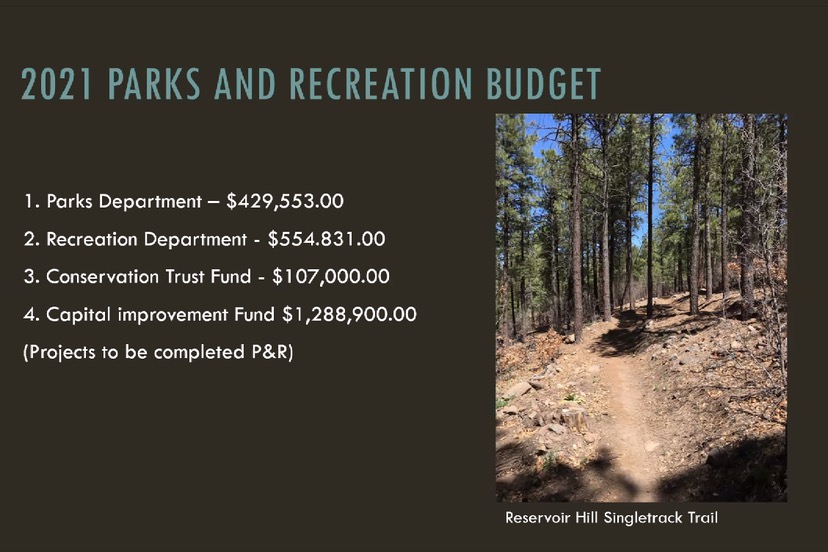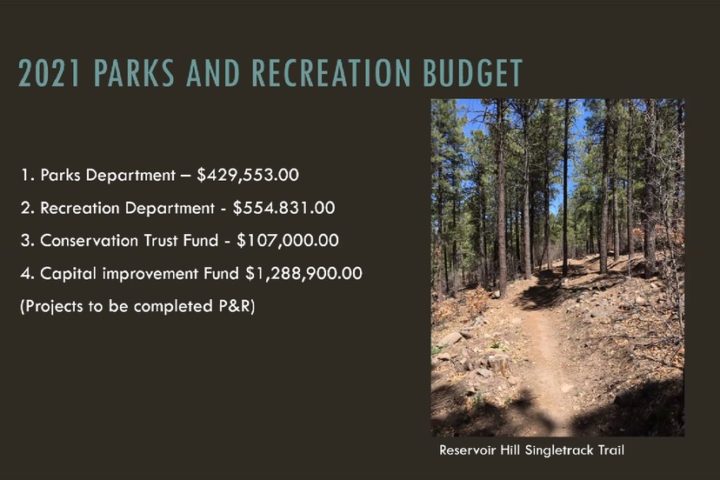Despite the increased popularity of the use of the term “sustainability”, the possibility that human societies will achieve environmental sustainability has been, and continues to be, questioned, in light of environmental degradation, climate change, over-consumption, population growth and societies’ pursuit of unlimited economic growth in a closed system…
— from the article on “Sustainability” on Wikipedia.org
From what I’ve heard, Pagosa Springs didn’t feel especially sustainable, back in the mid-1980s. The lion’s share of population growth in the community had occurred in 21-square miles of new subdivisions, west of downtown, developed jointly by Eaton International and Fairfield Pagosa, Inc. The development was conceived as a recreational retirement community — a rather artificial “suburban” wonderland without the benefit of any “urban” to be the “sub” of.
But it had recreation. Golf. Skiing. Horseback riding. Snowmobiling. Tennis. Racquetball. Swimming. Fishing. Boating. Birding. And hiking in the 1.9-million-acre San Juan National Forest.
Fairfield Pagosa bought out Eaton International in 1983, just as the Texas oil economy was headed into bankruptcy. As I’ve mentioned before, Pagosa Springs and Pagosa Lakes might not exist today, if it weren’t for Texas oil wealth. But that dependent relationship went through some tough times during the 1980s.
Back when Kathy Whitmire ran for Houston mayor in 1981, one of the big campaign issues was helicopters. Residents of the Memorial neighborhood were furious about the daily noise of west Houston businessmen flying over the gridlocked freeways for their morning commutes. That’s how over the top the Texas economy had become, as oil prices skyrocketed during the 1970s and into the early 1980s. The apex came in 1981, when oil prices hit $31.77 a barrel — almost ten times the price in 1973.
As a result of the incredible profit margins, Texas oil companies had gone deeply into debt, investing in drilling equipment and pipelines, with the intention of making as much money as possible, as quickly as possible. But the dream crumbled during the early 1980s when new North Sea oil discoveries and OPEC in-fighting caused an oil glut, and prices spiraled down and down and down. The number of Texas oil companies (and banks, and jewelry stores, and car dealerships) filing for bankruptcy went up and up and up.
It took a few years for the bankruptcies to hit Pagosa Springs. The biggest one, I suppose, was the 1990 bankruptcy filing by Fairfield Pagosa.
Fairfield’s parent company — Fairfield Communities Inc. — ultimately settled with Archuleta County ($6.5 million for roads and other infrastructure that had never been completed) and Pagosa Lakes Property Owners Association ($1.2 million earmarked for roads, an equestrian facility, an RV facility, and survey errors in the area of Lake Forest.)
But Fairfield wasn’t the only Pagosa company struggling in the late 1980s and early 1990s. As the money flowing into Pagosa slowed to a trickle, real estate prices dropped, construction companies were mothballed, and local governments and business organizations scrambled to design a coordinated plan to save the community. Building upon the (now bankrupt) Eaton/Fairfield dream, we would fulfill our destiny as a recreational tourism destination.
Or, to put it more cynically, we would sell our soul to the Devil.
A relatively affordable real estate market, and the beginnings of a retirement tsunami among middle-class, post-World War II employees and managers and CEOs — retirees who perhaps couldn’t quite afford Vail or Aspen or Telluride — created an economic rebirth during the 1990s.
It appeared, to certain community leaders, that a tourism-recreation-based economy was indeed the key to a long, happy future.
We can’t truly say that the decision by local governments and business groups, to focus on tourism and recreation, played a significant role in Pagosa’s rather spectacular population growth between 1990 and 2008. It’s possible those groups could have focused instead on economic diversity, and we would have seen exactly same type of growth. But certain patterns for policy-making and spending were nevertheless established during those years, and as a result, we find our governments still aggressively promoting tourism and recreation — and basically ignoring the community’s most pressing issue: housing for our workforce.
We shared, yesterday, a slide from the February 25 work session with the Pagosa Springs Town Council and the Parks and Recreation Joint Advisory Board. Both of these groups have consistently endorsed increased expenditures of taxpayer dollars on tourism and recreation.
$2.4 million to be spent on recreation, and parks. This slide doesn’t mention the additional $1 million the Town and County plan to spend, in 2021, exclusively on tourism marketing and tourism-related events. No one on the Parks and Recreation Joint Advisory Board or the Town Council raised the slightest objection to spending this kind of money promoting essentially frivolous activities.
Of course, many other changes took place between the Fairfield bankruptcy and the creation of our 2021 government budgets. We’ve often discussed, here in the Daily Post, the astronomical growth of the local vacation rental industry, for example, and the resulting disappearance of neighborhoods and long-term rentals and reasonably-priced homes.
Another change I’ve noticed, in passing: the over-regulation of commercial and residential construction. I assume the over-regulation really kicked into gear during the late 1990s and early 2000s, with local government bureaucrats taking their cues from property owners associations and home owners associations. The general idea behind over-regulation is to ensure, the the greatest extent possible, that nothing “affordable” can be built in an existing neighborhood. (Okay, Aspen Springs was the exception that proves the rule, but that’s a story for another day.)
Something that looked affordable would, of course, reduce the property values of the surrounding homes and businesses. So instead of writing building codes that mainly protected our health and safety, the HOAs and our local governments created regulations aimed at protecting — or increasing — existing property values.
Which brings us to the Town government’s open house, on February 24 at the Ross Aragon Community Center. The Town Planning Department has engaged an out-of-town consulting firm, Fort Collins-based LoganSimpson, to guide the current re-writing of the Town’s Land Use and Development Code.
This is a development code which I believe is seriously infected with an over-regulation virus. Possibly, a deadly virus.
Is there a vaccine available?



